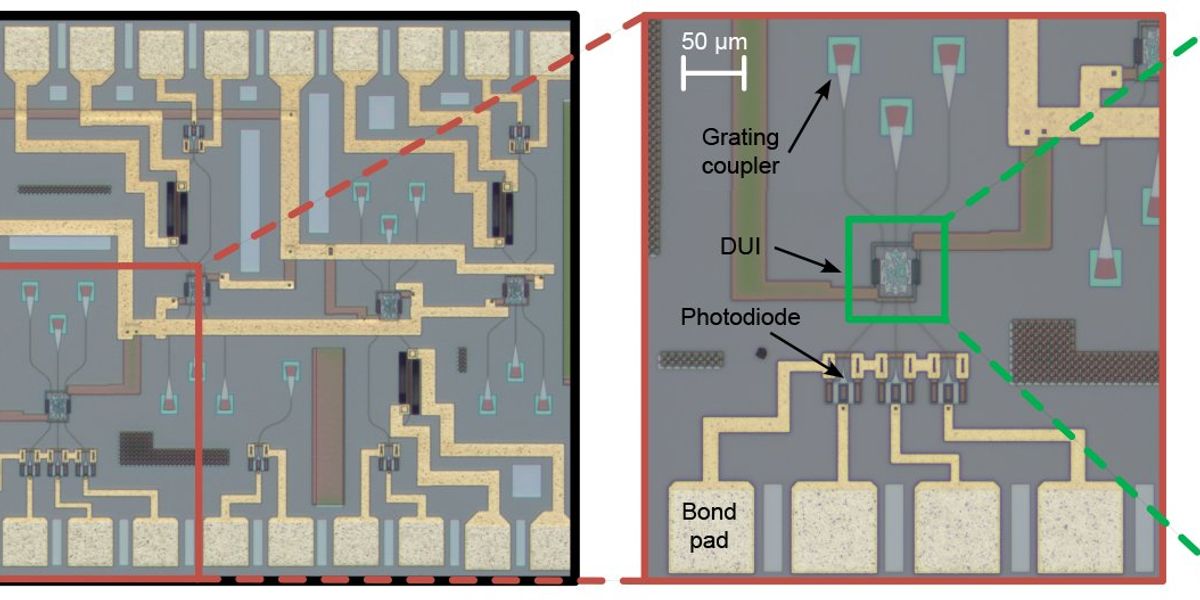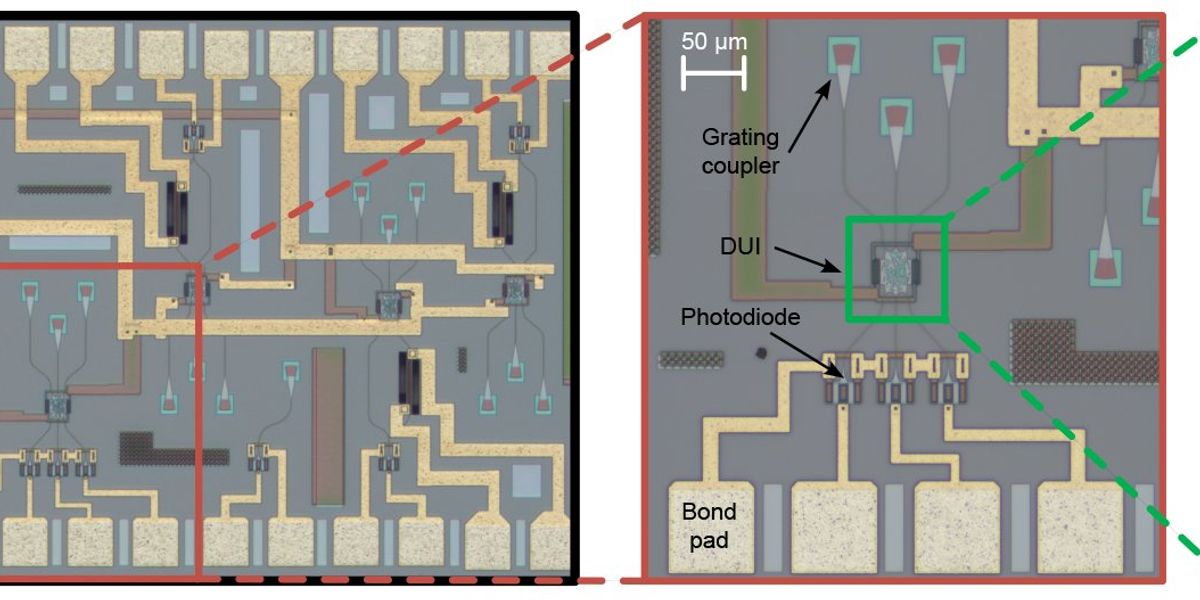A microchip that uses light instead of electricity can potentially be faster and more energy-efficient at the complex computations essential to training AI than conventional electronics. In addition, researchers say the new chips may be significantly more secure against hacking.
AI typically relies on neural networks in applications such as analyzing medical scans and supporting autonomous vehicles. In these systems, components known as neurons are fed data and cooperate to solve a problem, such as recognizing faces.
As neural networks grow in size and power, they are becoming more energy hungry when run on conventional electronics. This has led some researchers to investigate optical computing as a promising, next-generation foundation for AI. This photonic approach uses light instead of electricity to perform computations more quickly and with less power than an electronic counterpart. “It might be around 1,000 to 10,000 times faster,” says Nader Engheta, a professor of electrical and systems engineering at the University of Pennsylvania.
In the new study, researchers created a silicon wafer that varied in height from 150 to 220 nanometers. The height variations were organized such that the chip could make scatter light in specific patterns. When input in the form of light flows into the chip, the output light encodes data from complex tasks.
The scientists designed the microchip to perform vector matrix multiplication operations. These calculations, which involve multiplying grids of numbers known as matrices, are key to many computational tasks, including operating neural networks.
“It might be around 1,000 to 10,000 times faster.” —Nader Engheta, University of Pennsylvania
Whereas conventional electronics perform these calculations line by line, the new optical device performs the entirety of these computations at once. This means “one does not need to store the intermediate-stage information in a memory,” Engheta says. “Therefore, the results and processes are less vulnerable to hacking.”
Previously, when it came to designing photonics to perform these kinds of calculations, one challenge that scientists faced arose from how they had to use complex 3D simulations to model the three-dimensional behavior of the light waves inside these chips. This in turn made it computationally difficult to scale the devices to larger matrix sizes.
In the new study, by limiting how much the silicon’s thickness could vary across the chip, the researchers developed a way to use much simpler 2D simulations to model the devices. This in turn let them operate with larger matrix sizes.
In experiments, the scientists tested microchips capable of calculations with matrices as large as three by three on a side. They also designed a device capable of supporting matrices up to ten by ten on a side.
“To me, one of the exciting features of our work is conducting mathematical operations with near the speed of light using light,” Engheta says.
In the…
Read full article: Faster, More Secure Photonic Chip Boosts AI Training

The post “Faster, More Secure Photonic Chip Boosts AI Training” by Charles Q. Choi was published on 03/04/2024 by spectrum.ieee.org




































